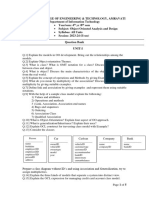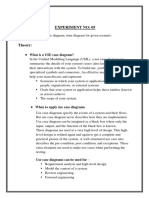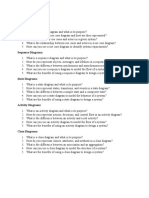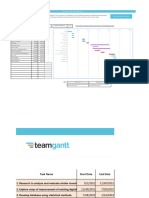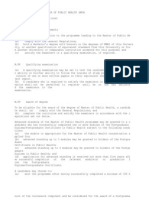1. Explain why it is important to model the context of a system that is being developed.
Give two
examples of possible errors that could arise if software engineers do not understand the system
context.
This proves that context modeling in software engineering is an activity entailing a structured
approach in which the many constituent elements, each influencing the others in design and
functionality, become clearer. A good model will enable the engineers to make informed decisions
throughout the development life cycle, hence coming up with an end product that meets all the
technical and user requirements. This helps minimize risks and avoid expensive mistakes, thus
providing the system a better chance of success in its natural operational environment.
Importance of Modeling Context:
• Stakeholder Identification and Requirement Gathering: In defining the system's context,
identification of major stakeholders could be pinpointed, including users, administrators,
third-party services, and their requirements, which could vary greatly, and hence become a
strong impact on the design of the system, besides its features and functionalities to be
implemented.
• Compatibility: By modeling the operational environment, the software engineer will
identify the possibility to render the system compatible with existing infrastructures,
technologies, and processes, thus allowing the integration and enhancing its performance.
• Risk Mitigation: Modeling the context of the system allows for the early identification of
risks that may emanate from outside factors, legal constraints, or dependence on other
systems that may affect successful deployment and operation of the system.
Misunderstanding User Needs or Expectation
Failure to understand the user's context by the engineers results in the creation of features that
are either unnecessary or ineffectively utilized by the targeted audience.
Example 1: For an educational application for young children, high-end functionalities, such as
complicated quizzes or multistep procedures that might be difficult for the kids to understand,
are simply overkill. Much more desirable is a simpler, easy-to-use interface that introduces
learning concepts in a game like way to the user group in question.
Example 2: A mobile banking application targeting elderly users might be designed to implement
an array of high-security measures, including multi-factor authentication and password
complexity, for which it is well known that most users will find it too hard to use. This will result
in frustration or abandoning the application. On the other hand, the corresponding approach
would be the implementation of simple login processes, clear, step-by-step instructions, and the
like, targeting this demographic group.
�2. You have been asked to develop a system that will help with planning large-scale events and
parties such as weddings, graduation celebrations, birthday parties, etc. Using an activity
diagram, model the process context for such a system that shows the activities involved in
planning a party (booking a venue, organizing invitations, etc.) and the system elements that may
be used at each stage.
�3. Develop a sequence diagram showing the interactions involved when a student registers for a
course in a university. Courses may have limited enrollment, so the registration process must
include checks that places are available. Assume that the student accesses an electronic course
catalog to find out about available courses.
�4. Look carefully at how messages and mailboxes are represented in the e-mail system that you
use. Model the object classes that might be used in the system implementation to represent a
mailbox and an e-mail message.
�5. Based on your experience with a bank ATM, draw an activity diagram that models the data
processing involved when a customer withdraws cash from the machine. Draw a sequence diagram
for the same system. Explain why you might want to develop both activity and sequence diagrams
when modeling the behavior of a system.
UML Activity Diagram:
�UML Sequence Diagram
• Customer interacts with the ATM to input their card, PIN, and withdrawal details.
• The ATM communicates with the Bank System to validate the PIN, check the balance, and
update the account balance after dispensing cash.
• After the transaction is completed, the ATM prints the receipt and ejects the card.
In conclusion, both activity and sequence diagrams are crucial tools for modeling the behavior of
a system, each serving a distinct purpose. The activity diagram provides a high-level view of the
flow of operations, highlighting the sequential steps and decision points involved in a process












